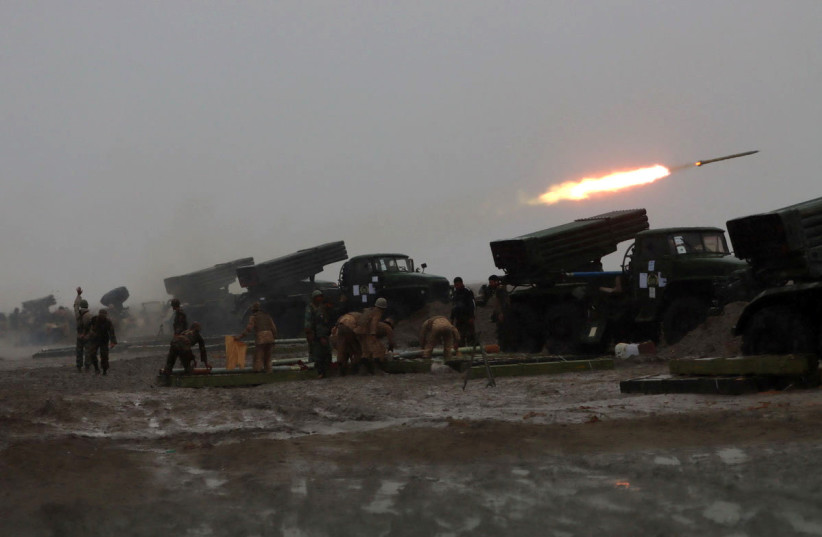Iran’s pro-regime media on Wednesday said that the country’s missiles and drones now have the “strategic straits” of the region in their crosshairs. The article in Iran’s Tasnim, which reflects the IRGC’s way of thinking about the region, says that Iran can now threaten Bab el-Mandeb off Yemen, the Straits of Hormuz between Iran and the Gulf and even the Suez Canal. The threat to the Mandeb and Hormuz area was well known in the past, but Iran now appears to have added Suez to its list of strategic choke-points for world trade that it says it could threaten.
The Iranian article comes in the wake of several others that have spelled out a new doctrine for warfare in the region which reflects an offensive stance designed to deal with perceived threats. Iran, in this new article spelling out the triple threat to the region’s waterways, is also upping its rhetoric about drones from Lebanon. The article is based in part on a speech by IRGC Commander Hossein Salami. He said that the Islamic Republic has drones that can even use “artificial intelligence” that can “affect the many strategic passages of the world.”
Iranian military goals and alliances
Salami says that the power of Iran’s drones are increasing and that Iran is accelerating its production of the systems. The article says that this has caused the US to “lose its air superiority.”
The article notes that drones threaten the UAE, Saudi Arabia, Yemen and Israel. It says that in any future or current confrontation with Hezbollah or Palestinian groups, these groups will not have the means to threaten Israel’s “sensitive and vital resources.” This appears to hint at Iran seeking to supply these groups with better weapons. For years, Tehran has moved weapons to Hezbollah via Syria, including PGMs and other munitions. The article says Iran equips these “resistance” groups with ballistic and cruise missiles and “anti-ship missiles.”
The Iranian regime now appears to be spelling out an even greater strategic threat by saying that having equipped Hezbollah, the Palestinians, Houthis and others with weapons, it can threaten major waterways in the region. The article openly notes that a large volume of the world’s trade passes via these waterways and blocking them can affect world energy supplies.

“Now these important sea crossings are within the range of integrated missile and drone networks,” Tasnim notes. The article references the recent Zulfikar drills. This is the third article in two days to highlight this issue. It says the IRGC “practiced an attack on Israel’s weapons of mass destruction production center in Dimona” during an exercise last year “using a combination of ballistic missiles and suicide drones.” This is a reference to an Iranian regime drill and video from December 2021.
“Now it seems that with these actions, Iran, in addition to being able to expand its power and influence in the important region of West Asia, can also affect the most important waterways of the world with its actions,” the article says. It references previous threats to a Saudi ship off of Yemen and also Iranian support for the Houthis and Hezbollah. As with another article Iranian media published this week, this one says Iran could strike at the straits of Mandeb, Hormuz or Suez if there is a threat to its “national interests.”
